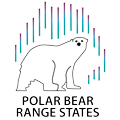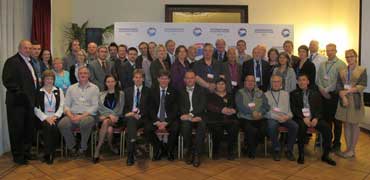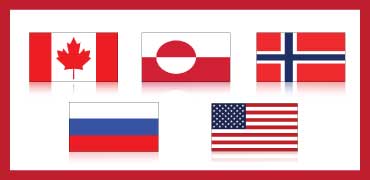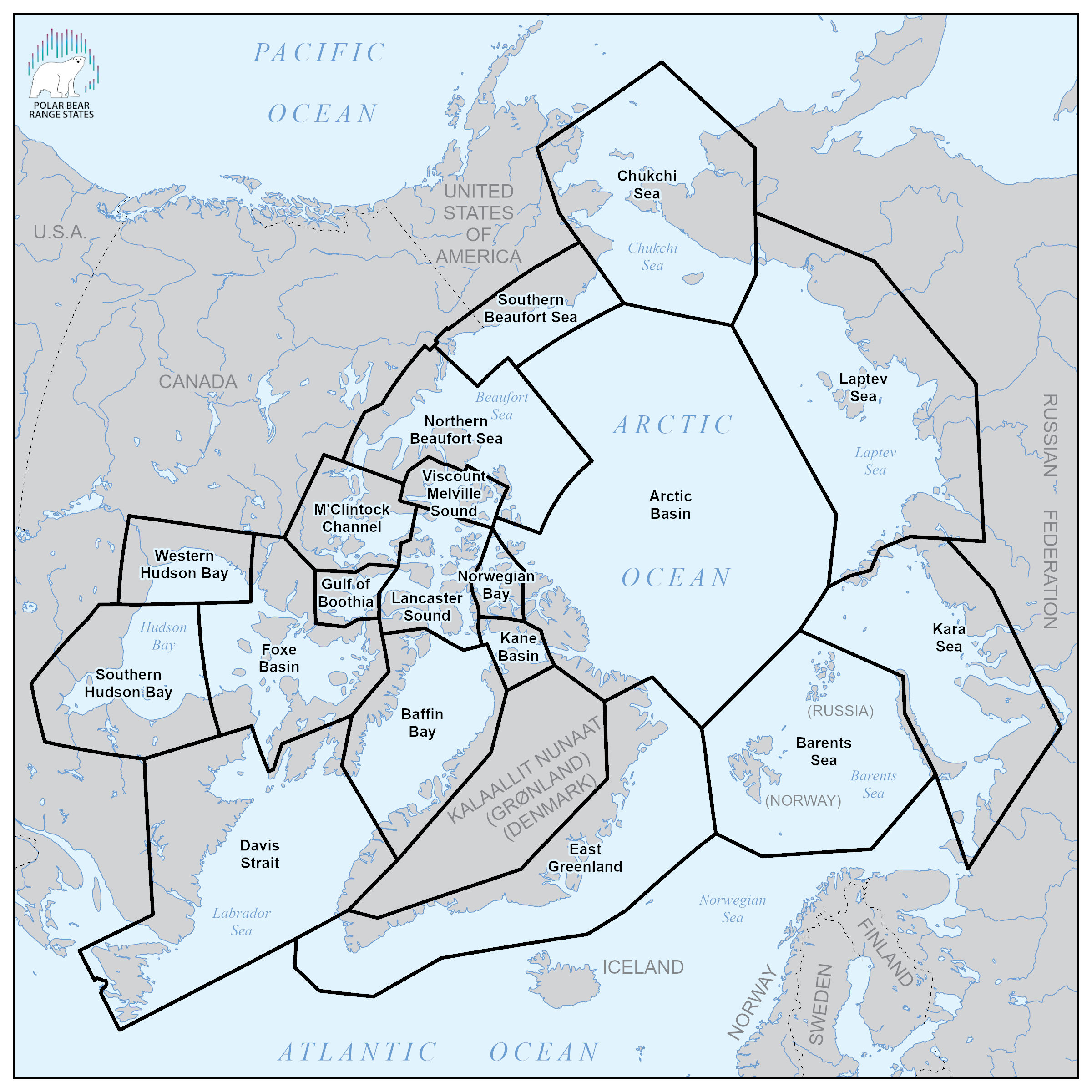 Polar bear subpopulation boundaries, as of July 2015
Polar bear subpopulation boundaries, as of July 2015
Across the circumpolar region, polar bears are managed on a subpopulation basis by federal governments and, in the case of Canada, provincial and territorial governments (i.e., jurisdictions) and Wildlife Management Boards. An examination of the 19 subpopulations reveals that four different situations exist, each of which requires specific management approaches:
- Subpopulation located entirely within one jurisdiction (Gulf of Boothia, M’Clintock Channel, Lancaster Sound, Norwegian Bay, East Greenland, Kara Sea, Laptev Sea)
- Subpopulation spanning more than one jurisdiction but located entirely within one country (Western Hudson Bay, Foxe Basin, Southern Hudson Bay, Viscount Melville, Northern Beaufort Sea)
- Subpopulation shared by more than one country, but within the exclusive economic zones of each country (Chukchi Sea, Kane Basin, Baffin Bay, Barents Sea, Southern Beaufort Sea, Davis Strait)
- Subpopulation shared by more than one country and extending into the adjacent high seas (Arctic Basin).
How the Range States have structured themselves to address each of the above situations is described in the National Management Systems and Bilateral Cooperation pages. None of the Range States have management regimes in place for the Arctic Basin subpopulation, although there are other international framework agreements in place that can help protect portions of this subpopulation. The Convention on Biological Diversity (CBD) and the United Nations Convention on the Law of the Sea (UNCLOS) are two such agreements. Under the CBD, each Party (Canada, Norway and Russia are parties, as is Greenland, through Denmark) is required to take action to protect components of coastal and marine biodiversity within its national jurisdiction. The CBD also requires Parties to cooperate to achieve conservation and sustainable use of biodiversity outside national jurisdiction, in the high seas and on the deep sea bed, as well as on other matters of mutual interest. It states that Parties to the Biodiversity Convention shall carry out their obligation to cooperate through competent international organizations, where appropriate.
The CBD also requires as far as possible and as appropriate, Parties to cooperate in respect of areas beyond national jurisdiction and on other matters of mutual interest for the conservation and sustainable use of biological diversity. CBD also states that Parties to it shall carry out their obligation to cooperate directly or, where appropriate, through competent international organizations.
The UNCLOS sets forth a comprehensive framework governing uses of the ocean, specifying rights of access and also duties to conserve living resources and protect and preserve the marine environment. Measures taken are to include those necessary to protect and preserve rare or fragile ecosystems, as well as the habitat of depleted, threatened or endangered species and other forms of marine life.
Under UNCLOS, coastal States conserve and manage the living marine resources under their jurisdiction are obligated to protect and preserve the marine environment within and beyond areas of national jurisdiction, and have the duty to cooperate in the conservation of living resources beyond areas of national jurisdiction, to share monitoring and assessment information, and to promote international cooperation in marine scientific research for peaceful purposes.
Source: Circumpolar Action Plan
“RECOGNIZE the importance and value of Traditional Ecological Knowledge in informing management decisions and ACKNOWLEDGE the need for the range states to develop a common understanding of what constitutes Traditional Ecological Knowledge and how it should be used in polar bear management decisions. “
2013 Ministerial Declaration of Representatives of the Parties
This Plan provides for the active participation of indigenous peoples in polar bear conservation. Indigenous peoples are represented by various ethnic groups in the circumpolar region. For many indigenous peoples living in Canada, Greenland, Chukotka (Russia), and Alaska (U.S.) the polar bear is a significant source of food and clothing and also contributes to the social, cultural, and in some instances, economic well-being of the communities. The Range States recognize the subsistence needs of Arctic indigenous peoples and understand that polar bear conservation will be best achieved by engaging such communities in management decision-making processes. In addition, in Canada, the implementation of Land Claims Agreements with some Aboriginal groups over the past 30 years has resulted in co-management arrangements that involve governments and Wildlife Management Boards working together. Similarly in the United States, cooperative agreements may be entered into between the federal government and Alaska Native organizations to conserve polar bears and provide co-management subsistence use by Alaska Natives.
Participation of Indigenous Peoples
The majority of polar bear research and management around the circumpolar Arctic is based upon scientific results. Indeed, the Range States formally recognize the IUCN/SSC PBSG as their scientific advisory body and rely upon this group for scientific information and advice. However, as previously stated, the Range States also recognize that the polar bear is important to Arctic local people and that their engagement in management and conservation is essential.
Indigenous peoples observe polar bears year round: while out on the land engaging in hunting activities, while traveling, and in their home communities. Their historic and current knowledge can contribute to effective polar bear management and provide insight into animal behavior, population and denning distribution and ecology. In addition, the participation of indigenous peoples in scientific research and monitoring activities can be beneficial. The knowledge of experienced indigenous hunters can contribute to the collective body of knowledge of the health, reproductive rates, survival rates and diet of polar bears. Traditional Ecological Knowledge (TEK) acquisition can contribute to scientific hypotheses and aid in the interpretation of scientific research and the establishment of research priorities.
Definition of Traditional Ecological Knowledge (TEK)
The Range States definition of Traditional Ecological Knowledge (TEK) was created to be inclusive, public, and harmonized with other official definitions. The definition is intended to provide the Range States TEK working group members and other stakeholders involved in the implementation of the Circumpolar Action Plan for Polar Bears (CAP) guidance when considering TEK as part of polar bear research and management initiatives. It was established with the knowledge that other definitions were consulted and analyzed before this one was chosen and is offered in a spirit of respect which has been inspired by the definition of TEK from the Arctic Council. It is not intended to override or replace guidance offered by Indigenous peoples and the Range States acknowledge that other expressions such as Indigenous Knowledge (IK) and Traditional Knowledge (TK) are preferred in some contexts.
Range States Traditional Ecological Knowledge Definition: “Traditional Ecological Knowledge (TEK) refers to a cumulative body of knowledge about the relationships of living beings with one another and with their environment, which is generated from the cultural practices, lived experiences and traditions of local and Indigenous peoples. TEK is specific to place, usually transmitted orally, and rooted in the experience of multiple generations including those most recent. It is a holistic and evolving body of knowledge that includes empirical observations about the environment, factual knowledge about past and current use of the environment, as well as values and beliefs, including moral or ethical statements about how to behave with respect to animals and the environment. TEK includes knowledge transmitted from past generations, as well as innovations and new knowledge transmitted to subsequent generations.”
Involvement of Indigenous Peoples
In making their assessments of the sizes and demographic trends of subpopulations, biologists often seek and benefit from local expertise. Studies carried out between 2011 and 2014 on the Baffin Bay and Kane Basin subpopulations are examples in which biologists have worked closely with local hunters. Specifically, the knowledge of the hunters was used to help identify the relevant survey areas (i.e., where bears might be expected to occur during the ice-free season), and hunters participated in portions of the field work. Additionally, the hunters were responsible for establishing fuel caches in remote areas and for removing the fuel drums after the surveys were complete.
For over 35 years, polar bear hunters in several jurisdictions within Canada have been required to provide samples from bears that are harvested. A requirement has been in place in the United States to collect data from harvested bears for over 25 years. Non-mandatory similar programs have existed in Greenland for several decades, and starting in 2011 Greenland began to require mandatory samples from all polar bears harvested. While there is some variation by country, these samples typically include some or all of the following: fat samples, the baculum (to confirm the sex), the skull, a vestigial tooth (for aging the individual) and research markings (ear tags, radio telemetry equipment, etc.). The practice of having hunters submit biological samples illustrates the successful cooperation among wildlife managers, researchers and local hunter communities. The information gathered can be used in conjunction with other biological surveys or can directly inform research (e.g., levels of contaminants as assessed from fat samples).
Source: Circumpolar Action Plan
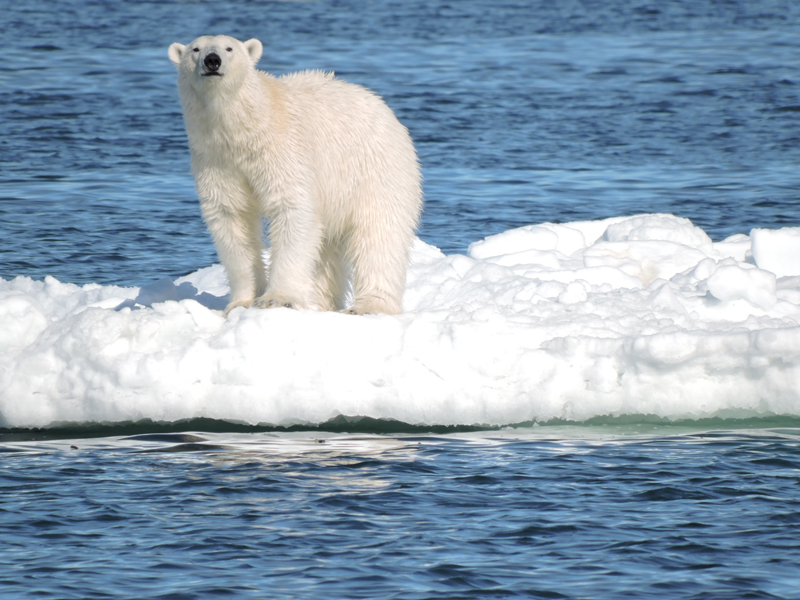 Photo credit: U.S. Fish and Wildlife Service
Photo credit: U.S. Fish and Wildlife Service
Adaptive Management
Adaptive management is a planned and systematic process for continuously improving environmental management decisions and practices by learning about their outcomes. It is a means of making decisions in cases where knowledge gaps exist about the impacts of particular activities on a situation. Adaptive management provides flexibility to identify and implement new measures or to modify existing ones during the life of a project or activity. Assumptions can be tested and, if unanticipated adverse effects are detected, necessary, corrective actions can be taken.
Adaptive management is essential to planning and decision-making for polar bear conservation and management throughout the circumpolar region, since the impacts of climate change and other stressors on polar bears and their ecosystems will be wide-ranging and their timing and significance, highly uncertain. Adaptive management can also be applied to project environmental assessments and associated regulatory approvals that may affect polar bears.
Monitoring the efficacy of mitigation measures and research are key components of an adaptive management framework. One of the primary purposes of monitoring is to reduce the critical uncertainty that impedes the ability to make informed management decisions. Uncertainty can take on many forms. For example, it could be the lack of knowledge regarding the status and trends of a particular subpopulation or it could be associated with a new type of activity (e.g., year-round shipping) within polar bear habitat. Regardless, it is important to be cautious when making management decisions in the face of uncertainty, conflicting or a lack of information.
Source: Circumpolar Action Plan
Scientific Research and Monitoring
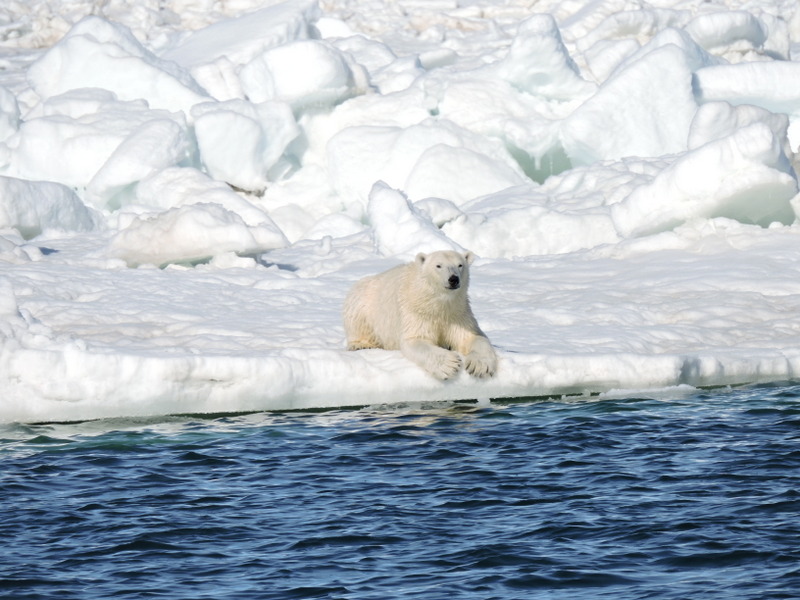
The Circumpolar Monitoring Framework for Polar Bears (Circumpolar Action Plan, Appendix III) gives useful guidance to create monitoring plans to detect ongoing patterns, predict future trends, and identify the most vulnerable polar bear subpopulations. Strategies are recommended for monitoring all key parameters of polar bear persistence, such as subpopulation abundance and trends, reproduction, survival, ecosystem change, human-caused mortality, human-bear conflict, prey availability, health, stature, distribution, behavioral change, and the effects of monitoring itself.
Science Foundation and TEK
The negotiations leading to the Agreement on the Conservation of Polar Bears and the following cooperation between the Parties to the Agreement were founded on scientific principles and concerns. The International Union for Conservation of Nature (IUCN) was a crucial partner during these negotiations. The Polar Bear Specialist Group of the IUCN Species Survival Commission (IUCN/SSC PBSG) spawned from these negotiations, and the group later oversaw all issues including compliance with the Agreement, especially between 1981 and 2009 when the Parties were largely inactive (in a collaborative sense). Thus, there has been a scientific knowledge foundation for the intergovernmental and international cooperation on management and research on polar bears. This is reflected in Article II of the Agreement, where it is stated that polar bear populations shall be managed “in accordance with sound conservation practices based on the best available scientific data”.
Arctic communities have an alternative, often complimentary and additive knowledge system. This collective information is commonly referred to as Traditional Ecological Knowledge (TEK). As polar bears have been an important part of Arctic traditional culture for thousands of years, mainly through livelihood support as a crucial part of their harvest, TEK has become a necessary part of all efforts of polar bear conservation. The Circumpolar Monitoring Framework outlines how TEK may be combined with science to provide complementary lines of evidence with respect to management and conservation.
Source: Circumpolar Action Plan
![]()
![]()
![]()
![]()
![]()
